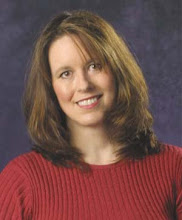
On a recent trip to New York I had the great fortune to stumble upon the downtown Manhattan stables of Central Park Carriages. Earlier in my trip I had noticed the many carriage horses that carried tourists through the park and had wondered about their lives. I needn't have worried.
After a long day at Book Expo America my publisher and I were looking for a cab when we passed by the stable entrance. Inside, a man was shoeing a tall flea-bitten gray gelding. "Let's give him an ARC," my publisher said, referring to an advance reader copy of my horse mystery, The Opium Equation, which is due out in September. Why not, I thought? After all, how often do you run into a farrier in New York City?
Glad to get out of the afternoon sun we introduced ourselves to Cornelius Byrne and his twenty-six year old Standardbred gelding, Romeo. It turns out that Cornelius was the owner of the stable. He was very welcoming and insisted on giving us the full tour. I have to say, I was quite impressed.
On the street level were a number of well-maintained harnesses and carriages, and a few mint condition antique carriages. The horses live upstairs and to get there they climb a steep rubber ramp to the second floor. Once we had managed the climb in our "business shoes," I was pleased to find a dozen or so airy stalls. Each stall was clean, and deeply bedded with shavings. And, each horse had a big pile of clean, fresh hay.
The horses were a mix of draft, Warmbloods, and Standardbreds. Every horse I saw was curious about us and friendly and showed no sign of job burn-out. Cornelius encouraged me to go into the stalls to meet the horses and after a few "horseless" days, I was more than ready. I had expected to find some working soreness in the horses, but not one horse exhibited any such thing. They all were clean legged and friendly; immaculately clipped, shod, and groomed; and each horse was fit––even Romeo, who at twenty-six only works about one day a week.
Cornelius explained that he gets his Standardbreds off the track, horses that were not winning races and otherwise might not have anywhere to go other than the packing plant. Other horses were rescued from poor circumstances and now have a good life and a job. Is it sad that these horses rarely get to run in an open field? Yes. However, these engaging and intelligent horses might not have a life at all were if not for Cornelius, his brother Patrick, and Central Park Carriages.
Thank you Cornelius, for a wonderful tour, and for your commitment to the excellent well being of the horses in your care.




